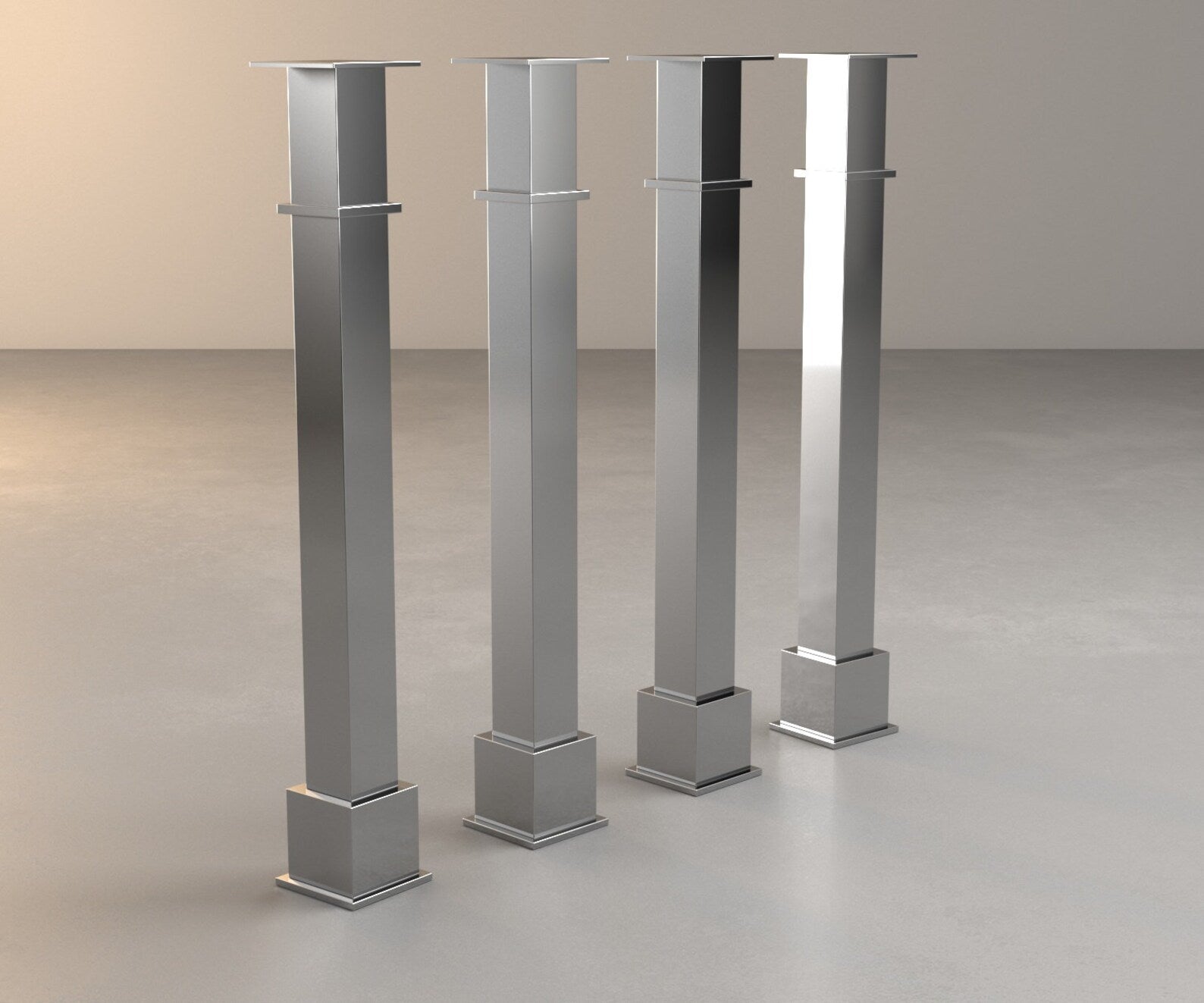An Overview to Choosing the Perfect Legs For Kitchen Island for Your Home
Selecting the suitable legs for your cooking area island is a nuanced choice that influences both the capability and visual allure of this main space. Aspects such as height, products, and design play a vital function in balancing your island with the total kitchen area style. Additionally, comprehending the significance of security and upkeep can dramatically influence your option. As you take into consideration these components, it becomes apparent that the appropriate legs can transform not just the look of your cooking area but additionally its functionality for years ahead. What specific features should you focus on in this selection process?

Understanding Kitchen Area Island Legs
When choosing legs for a cooking area island, it's vital to understand their visual and useful duties in the total style. The legs work as an essential assistance system, ensuring stability and resilience for the island, which typically operates as a work space, eating location, or collecting spot. Consequently, the option of material and building and construction technique must be robust enough to hold up against everyday usage and prospective wear.
Along with their architectural responsibilities, legs contribute considerably to the island's visual allure. They can boost the kitchen area's style, whether via standard, contemporary, or diverse styles. The elevation and proportion of the legs are additionally vital considerations; they should harmonize with the island's counter top height while making certain comfy seating for those making use of the space.
Furthermore, the leg style can affect the total circulation of the kitchen. Open, ventilated leg designs can create a sense of agility, while strong, substantial legs may convey an extra grounded and steady aesthetic - Legs For Kitchen Island. Understanding these visual and functional elements will certainly lead house owners in making notified options that complement their kitchen area's layout and improve its usability
Popular Styles and Materials
The option of legs for a kitchen island encompasses a variety of preferred designs and products, each offering distinct attributes that can improve both performance and looks. Typical legs typically exhibit elaborate details and workmanship, boosting traditional kitchen area layouts.

Elevation and Security Factors To Consider

The legs of the kitchen island ought to supply sufficient assistance, ensuring that the framework can hold up against everyday usage without moving or tottering. Material option plays a significant duty in stability; steel legs, for instance, tend to provide higher toughness contrasted to timber.
Matching Your Kitchen Area Aesthetic
Choosing the ideal legs for your kitchen island goes past functionality; it likewise plays a significant duty in the overall visual of the area. When choosing legs, take into consideration the layout style of your kitchen. For a contemporary look, streamlined metal or minimal layouts can produce a clean, contemporary vibe. On the various other hand, conventional or rustic kitchens typically gain from wooden legs with intricate describing or a distressed finish, enhancing warmth and character.
Color is another important aspect. Legs that complement or comparison with your island's surface area and bordering kitchen cabinetry can produce visual consistency or striking focal points. Combining dark wood legs with a light marble countertop can add depth and passion. Additionally, think about the coating of the legs; matte, shiny, or distinctive surfaces can significantly impact the general feeling of the kitchen area.
Installment and Upkeep Tips
Installing cooking area island legs needs cautious attention to detail to ensure both security and visual allure. Utilize a stud finder to situate wall studs if you are connecting the legs to a wall surface or making use of brackets for included support.
When protecting the legs, check my source utilize high-grade screws and, if essential, timber glue for added strength. For steel legs, guarantee that you are using appropriate supports and tools to avoid damage to your flooring. It is a good idea to look for levelness after installment, making changes as required to prevent wobbling.
Tidy the legs with an ideal cleaner, avoiding rough materials that might damage the surface. By adhering to these setup and maintenance tips, you can make sure that your cooking area island legs continue to be both aesthetically enticing and practical.
Final Thought
In conclusion, selecting the ideal legs for a kitchen area island necessitates mindful consideration of height, stability, and aesthetic compatibility. Inevitably, thoughtful leg selection plays a critical duty in have a peek here boosting both the practicality and design of the kitchen room.
When picking legs for a kitchen island, it's necessary to comprehend their practical and aesthetic functions in the total layout. Open, airy leg styles can create a sense of agility, while strong, substantial legs may convey a more based and secure aesthetic. The legs of the kitchen area island must offer adequate assistance, guaranteeing that the framework can endure everyday usage without tottering or moving.Mounting cooking area island legs needs mindful focus to information to make sure both security and visual charm.In verdict, selecting the appropriate legs for a cooking area island necessitates careful factor to consider of elevation, security, and aesthetic compatibility.